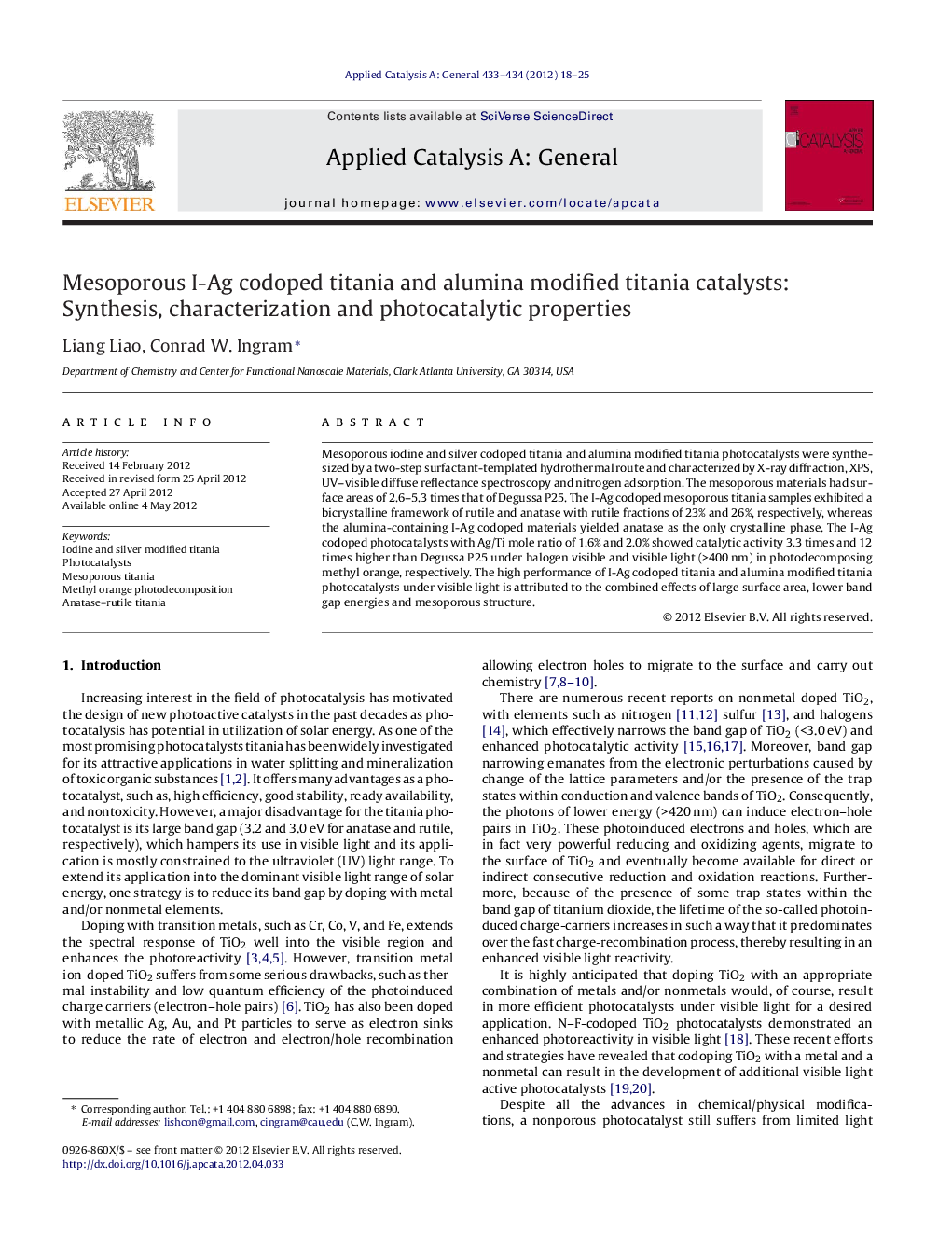| Article ID | Journal | Published Year | Pages | File Type |
|---|---|---|---|---|
| 40866 | Applied Catalysis A: General | 2012 | 8 Pages |
Mesoporous iodine and silver codoped titania and alumina modified titania photocatalysts were synthesized by a two-step surfactant-templated hydrothermal route and characterized by X-ray diffraction, XPS, UV–visible diffuse reflectance spectroscopy and nitrogen adsorption. The mesoporous materials had surface areas of 2.6–5.3 times that of Degussa P25. The I-Ag codoped mesoporous titania samples exhibited a bicrystalline framework of rutile and anatase with rutile fractions of 23% and 26%, respectively, whereas the alumina-containing I-Ag codoped materials yielded anatase as the only crystalline phase. The I-Ag codoped photocatalysts with Ag/Ti mole ratio of 1.6% and 2.0% showed catalytic activity 3.3 times and 12 times higher than Degussa P25 under halogen visible and visible light (>400 nm) in photodecomposing methyl orange, respectively. The high performance of I-Ag codoped titania and alumina modified titania photocatalysts under visible light is attributed to the combined effects of large surface area, lower band gap energies and mesoporous structure.
Graphical abstract.Figure optionsDownload full-size imageDownload high-quality image (100 K)Download as PowerPoint slideHighlights► High surface area mesoporous I-Ag-TiO2 and I-Ag-TiO2-Al2O3 photocatalyts synthesized. ► I-Ag-TiO2 and I-Ag-TiO2-Al2O3 shifted UV–vis adsorption into the visible range.► The presence of Ag facilitated the incorporation of I in the structure. ► Ag-I-TiO2 and Ag-I-TiO2-Al2O3 with visible light photocatalysis up to 12× P25.
